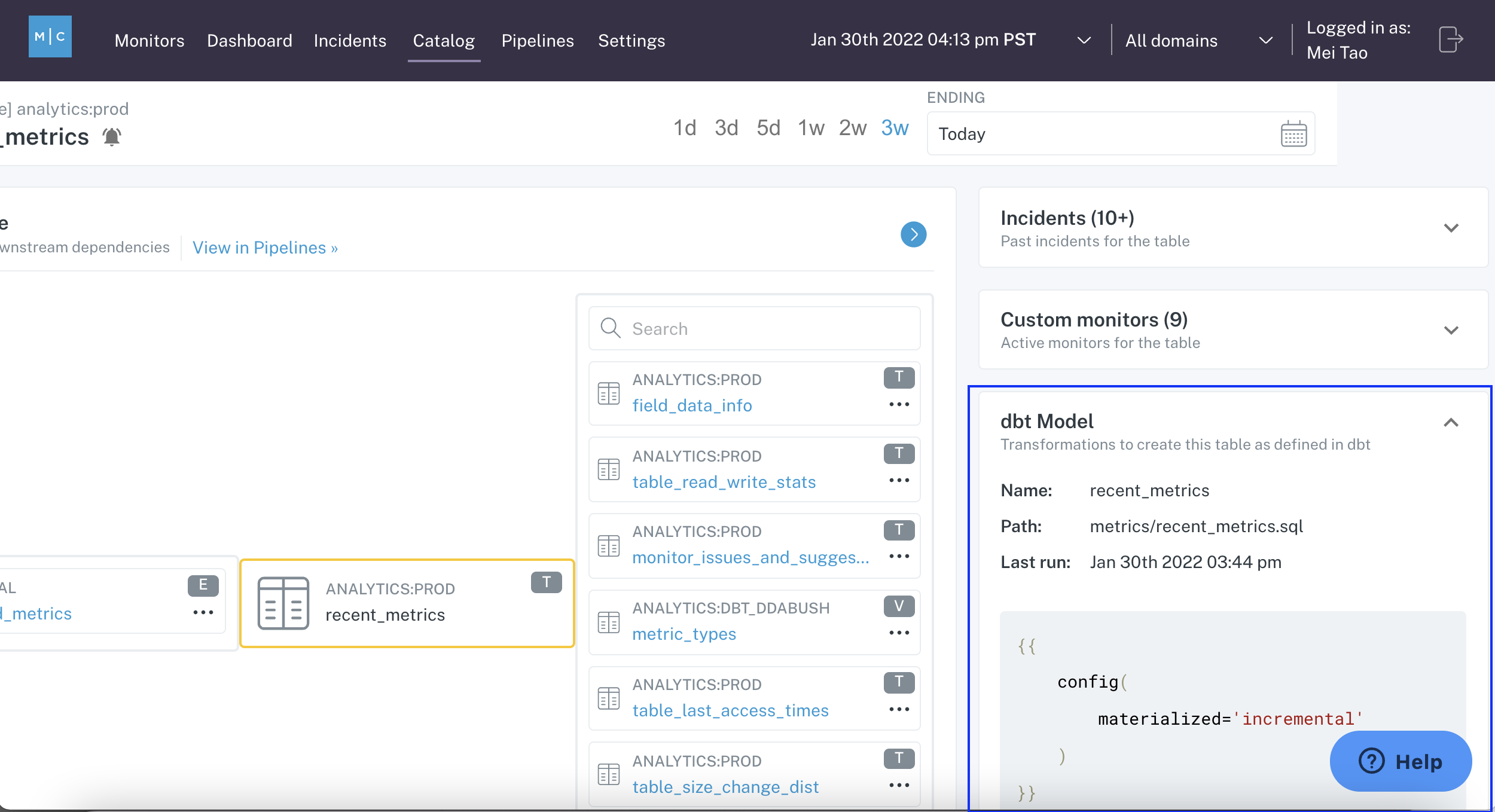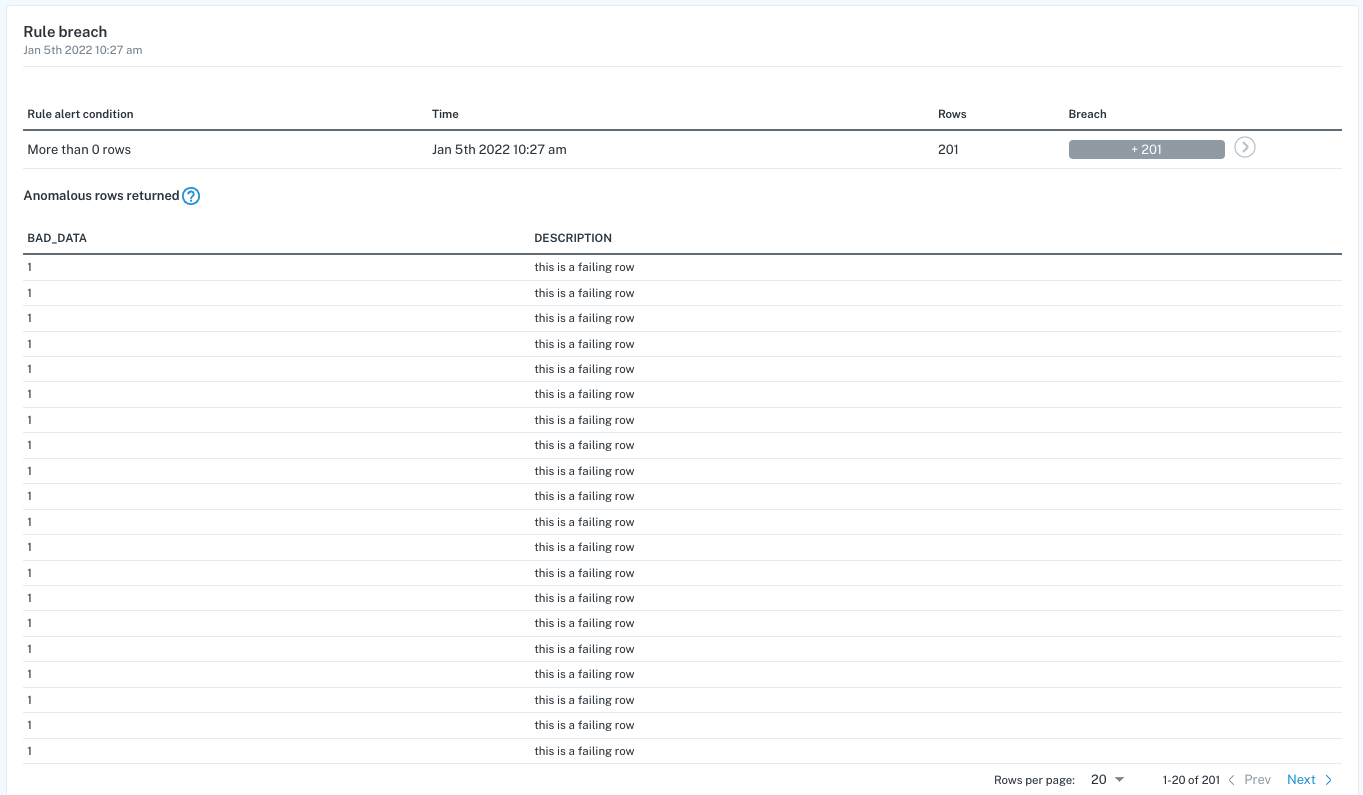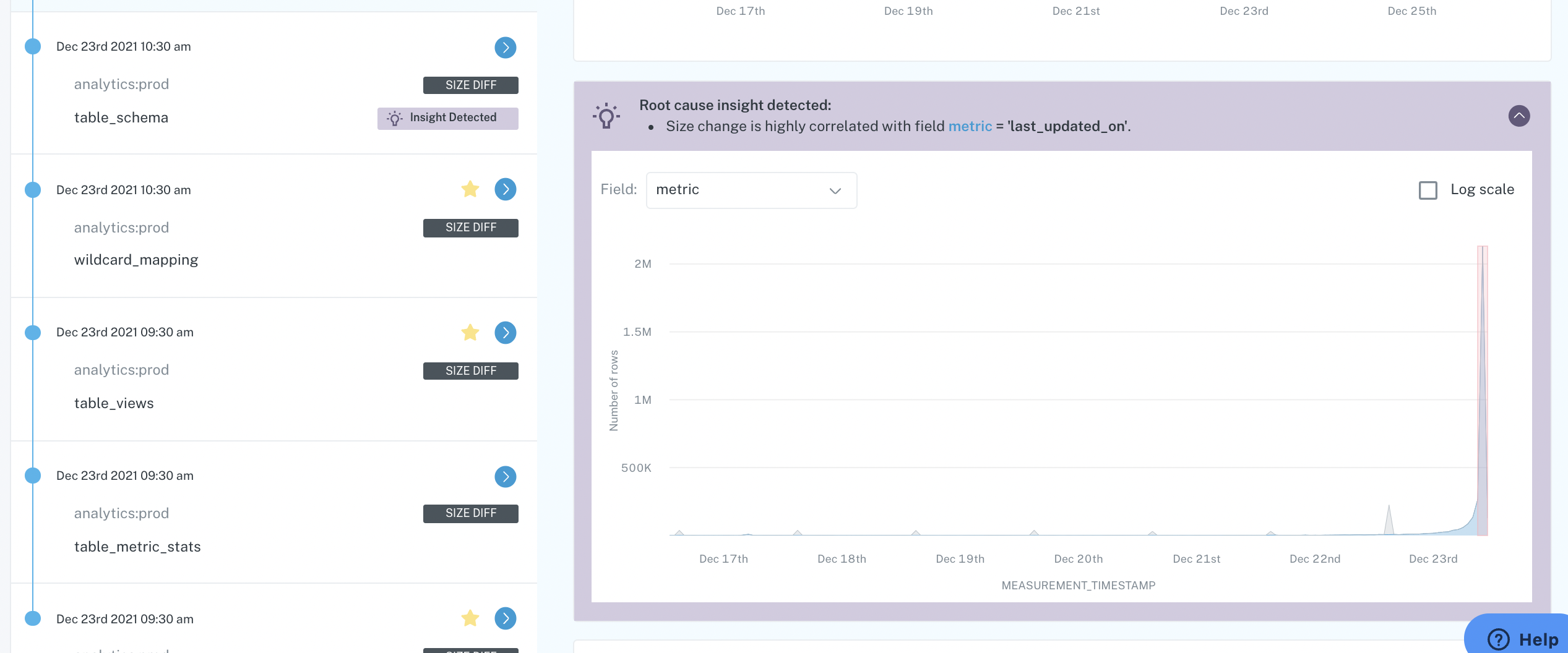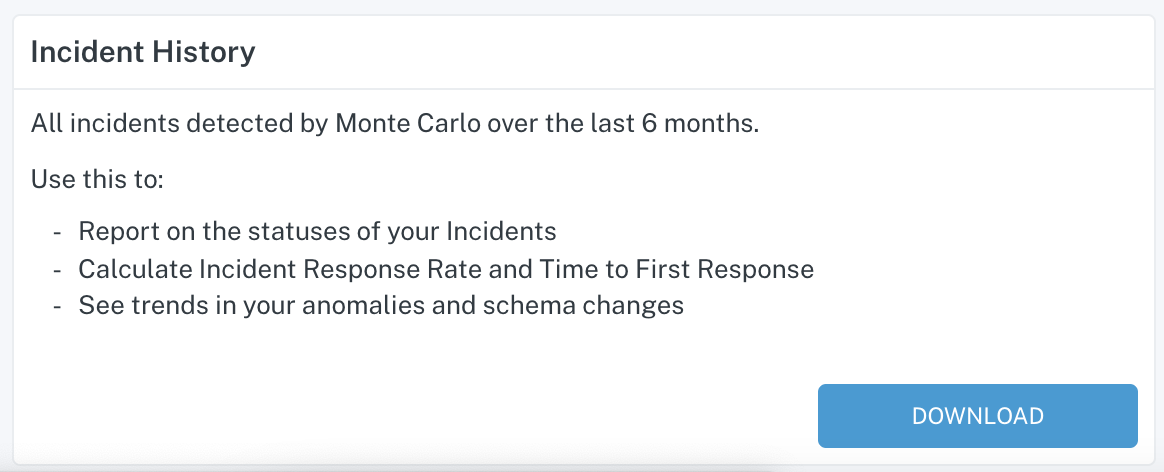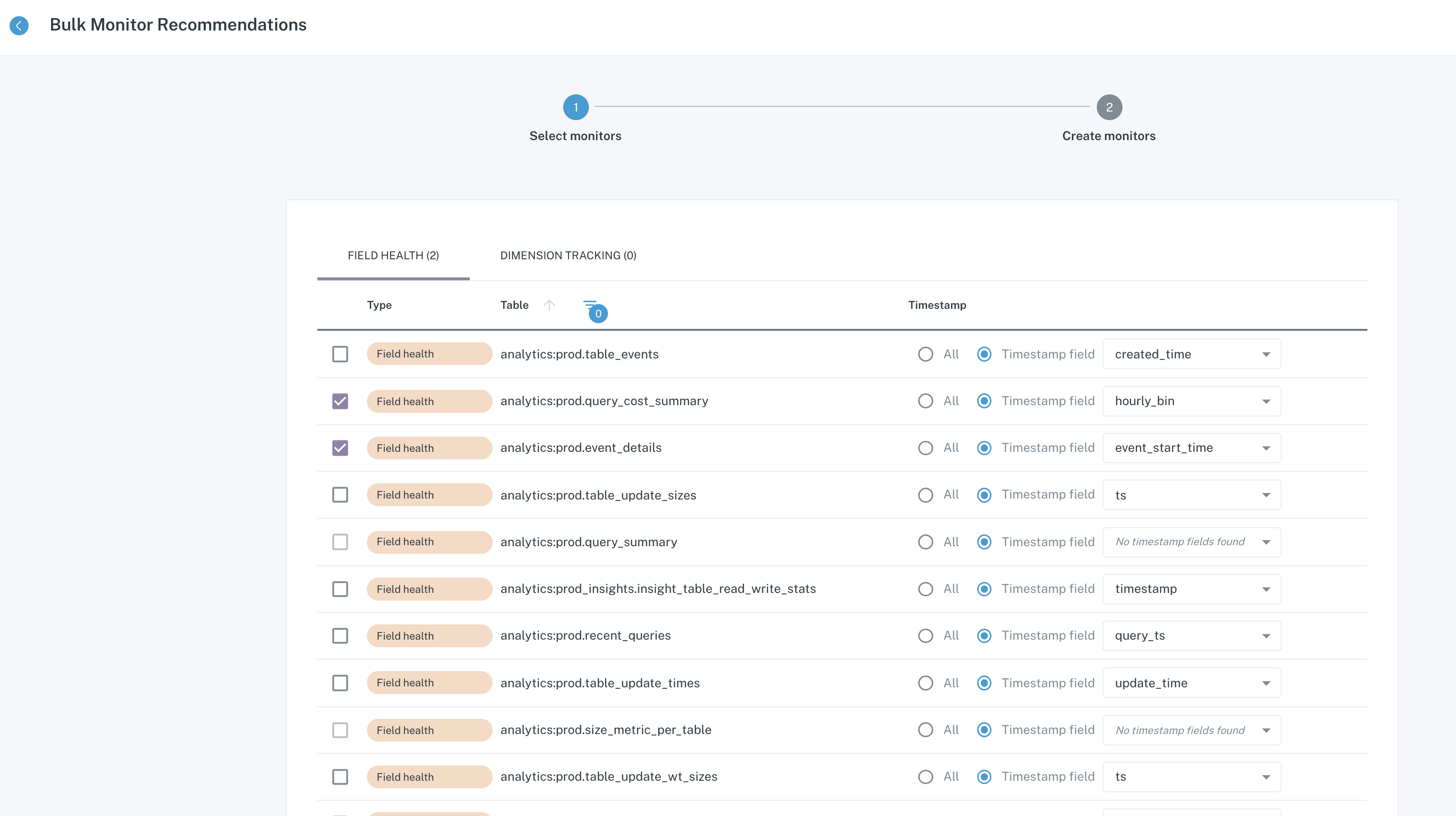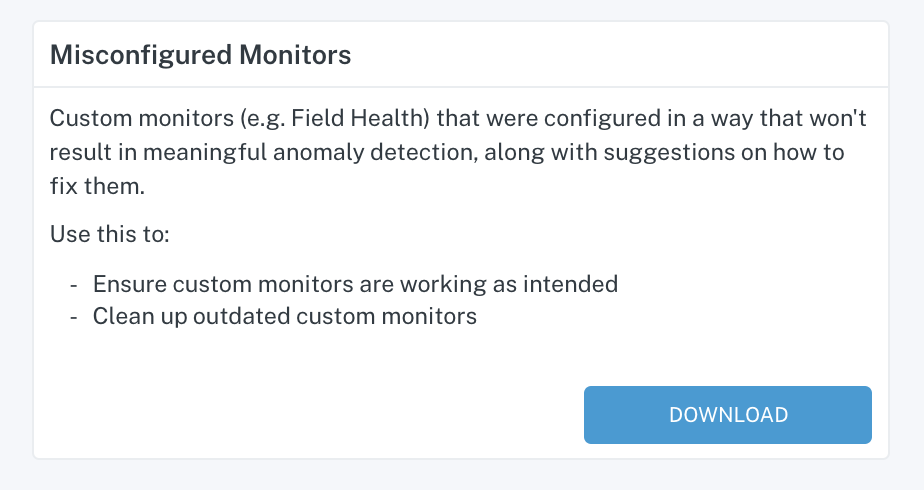
Despite the short month, the team continued to ship a bunch of great features across the app!
What's new
- SQL Rule Circuit Breakers:To help prevent data issues, you can now use Monte Carlo circuit breakers to stop pipelines when a SQL Rule check fails. We developed multiple mechanisms to integrate seamlessly with your pipelines including an Airflow provider, Python operator, and direct API support. See docs here
- Expanded Reproducing and Sample query support:To speed up incident investigations we now show queries to reproduce an anomaly and to sample anomalous data in the Incident cards and in Incident IQ
- Importance score & Key Asset Notification filters:To improve the relevance of notifications you can now filter notifications by Monte Carlo's computed importance score for tables
- Automatic thresholding for SQL Rules: Instead of explicitly defining a threshold for each SQL Rule, we now offer a ML-based threshold detector that will notify you of abnormal activity in number of rows returned by the SQL Rule
Improvements and fixes
- Weekly seasonality support for volume detectors: When a FH monitor is applied to a table, we also deploy volume monitors that look for more detailed volume changes. Those monitors now incorporate seasonality to provide more reliable detections.
- Add support for editing integrations: Users can more easily edit Tableau and Looker integration settings from the UI
- Fix new Impact Radius module rendering issues: Fixed a bug that was causing issues rendering the Impact Radius module for some customers
What's next
- Airflow error logs: Integrate Airflow task error logs into Incident IQ to help users investigate pipeline issues for incidents


